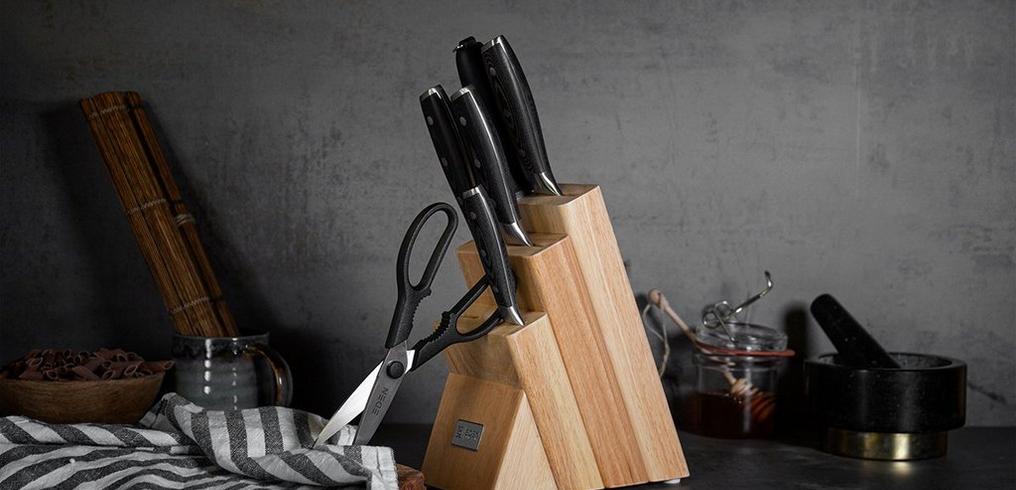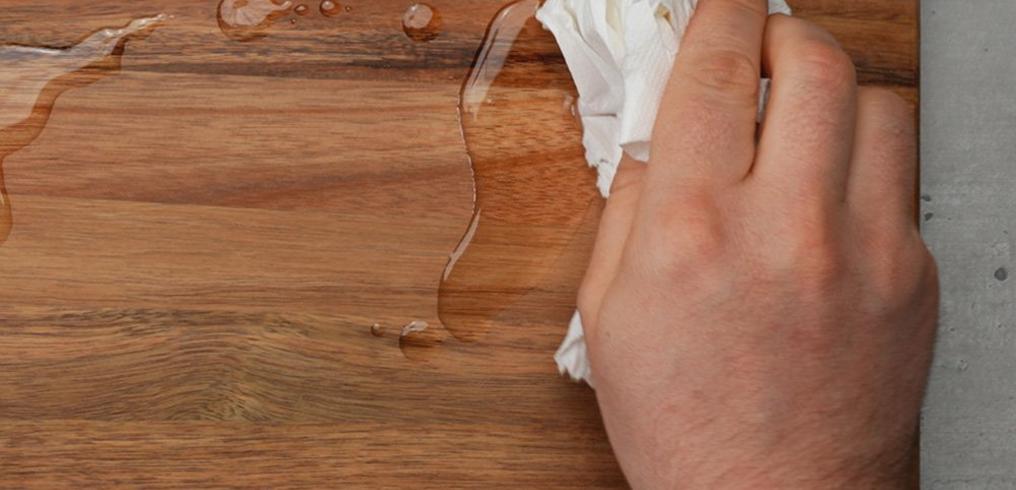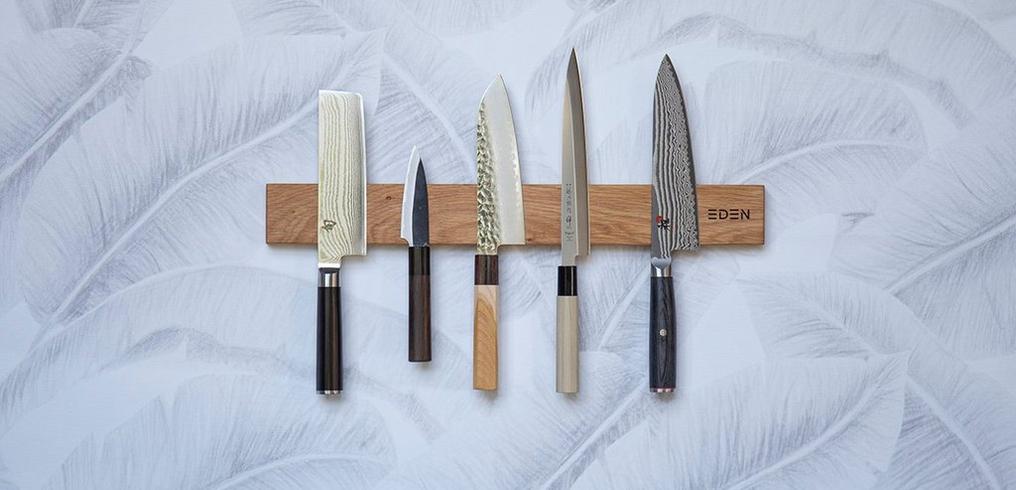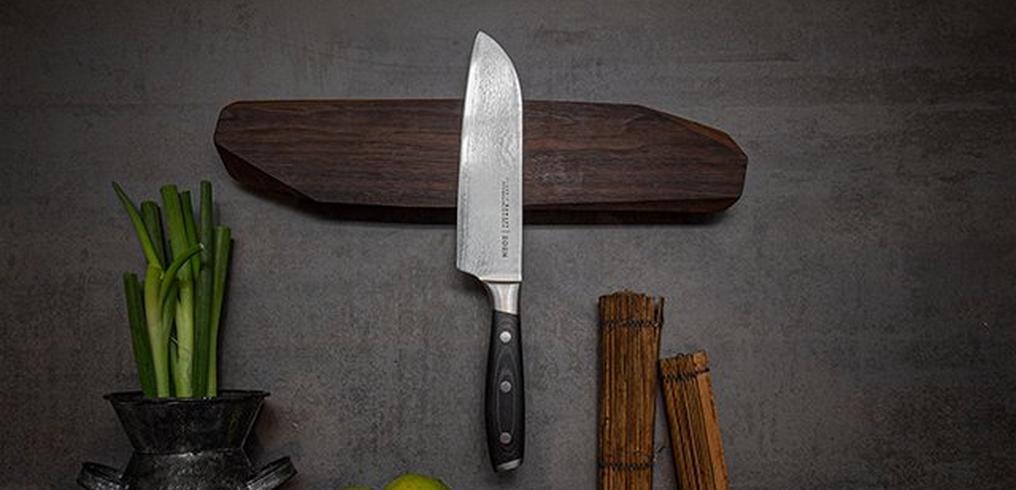Ceramic knives
In December 2014 we have done a new comprehensive test with ceramic knives of multiple manufacturers. We have tested the knives on sharpness, how long they remain sharp, user-friendliness, how it holds under pressure and how it reacts to sharpening. In this test we have compared the ceramic knives with comparable steel kitchen knives.
The knives we have tested
For this test we have used ceramic knives by Kyocera, who are the biggest player in the market for ceramic knives. Next to that we have also tested ceramic knives from other manufacturers. To compare the ceramic knives we have used steel chef’s knives from Kai, Wüsthof, Robert Herder and our own Eden Kanso Aogami.
Sharpness out of the box
When we tested the Kyocera knives for sharpness we found out the knives are delivered very sharp. Comparable to steel knives and in some cases even better. We have also tested cheaper ceramic knives but they do not come close to the sharpness Kyocera knives offer.
User-friendliness
After testing the initial sharpness we have cut onions and carrots for over an hour with six people. Everyone has used all the different knives so we could get a most comprehensive result.
What stood out is that the Kyocera knives cut into the wooden cutting boards we used. When we tried to use them without applying a lot of pressure, the knives do not move very smoothly. It feels a bit like grinding sand paper over the cutting board. In comparison, the steel knives do move smoothly over the cutting board. We have tested two Kyocera knives (the 13 cm and the 18 cm) and noticed a difference amongst them in how easily they cut. This cannot be attributed to the difference in size, but lies more in the thickness and geometry of the knives.
Chipping
Kyocera adds a booklet to their knives which states that the knives are unsuitable to wiggle with. The knives can only be used for straight cutting. When we used the knives properly we noticed that small pieces of the blade had broken off. We have only tested the knives for one afternoon, but we imagine that when the knives are used over a longer period of time the blade will be damaged very much. An important question remains: Where exactly do the little ceramic pieces go after they have broken off of the blade?
Sharpness after use
After cutting, all the knives undergo the sharpness test again. In this test the ceramic knives perform considerably better than the steel knives. The test proves they do stay sharp for a longer amount of time. In using the knives we have not felt the difference in sharpness between ceramic and steel knives. This is because sharpness test only measures the sharpness of the blade itself. The geometry of a blade plays a big role in how the knife feels to the user. It is possible that a knife does not do extremely well in the sharpness test, but due to its geometry it can still cut really well. We also note that the ceramic knives are all thicker than the steel knives.
Sharpening ceramic knives
The next step is sharpening the blades. The steel knives we sharpen on Naniwa Chosera stones up to grit size 5000. For the ceramic knives we have used a battery charged diamond sharpener. Ceramic is such a hard material it can only be sharpened by diamond. It is difficult to get an even sharpening result with the diamond sharpener. The knives do get sharp but it takes quite some time and effort to get rid of the chipping on the blade. The machine also jams often, so we are not very positive about this means of sharpening.
The ceramic knives can be sent to the supplier to have a professional sharpen them. The box the knives are shipped in contains a voucher which can be exchanged for sharpening the knives. The problem remains you cannot use the knife for a certain amount of time and have to pay shipping costs. Just doing quick maintenance on your knife at home, with a sharpening rod or whetstone, is impossible. For steel kitchen knives there are many different possibilities to sharpen them at home or give them a quick touch-up.
The twisting test
On the packaging of the ceramic knives it says they are unsuitable to twist and flex with. However, it is impossible to prevent some sideways pressure on the blade at all times. The twisting test also says something about how it can withstand falling so we have tested al the knives on this.
In this test a U-shaped holder is placed over the blade. The holder is twisted and we measure how much force we have to apply before the blade breaks. The Kyocera of 18 cm’s did pretty well with 0,33Nm. Even better than the thinly sharpened carbon steel knife we have tested, which broke with 0,30Nm. The Kyocera 13 cm knife did not do so well and breaks with 0,08Nm. When we tested a thin VG-10 knife of a big Japanese brand we could apply 7,75 times more pressure compared to its ceramic counterpart with 0,65Nm. The Wüsthof Classic knife we tested wins the test easily with a 1,34Nm.
The cheap ceramic knives do not come close to the Kyocera knives. One knife even broke when we put the holder on the blade to start the test. The difference between the cheap ceramic knives and Kyocera is not just the price and sharpness, but also lies in the quality of the material.
Conclusion
- There are positive and negative sides to the ceramic knives. When made by a good manufacturer they are delivered sharply. They stay sharp longer than the steel knives and, of course, do not rust. Also, many people experience the low weight of the knives to be comfortable.
- Ceramic knives have the disadvantage that they are difficult, if not impossible, to sharpen them yourself. Quick maintenance with a sharpening rod is also not possible. The diamond sharpener was not a great means of sharpening either.
- The biggest concern with ceramic knives is the chipping of the blade. The miniscule pieces breaking off of the blade shows how fragile the knives are, and demonstrates that the sharpness will decline. The only solution then is to send the knives back to the supplier to get them sharpened.
- Because of this we have decided not to sell ceramic knives. While there is an obvious demand for these knives we have decided not to supply these knives to consumers. We feel that is important to sell products we completely support.
The alternative to ceramic knives
What is the alternative? If you want a knife that is and remains razor sharp, without having to be sharpened from time to time, we unfortunately have no solution. If you look for a knife that is razor sharp and can be kept razor sharp with some maintenance, we have many possibilities: steel knives.

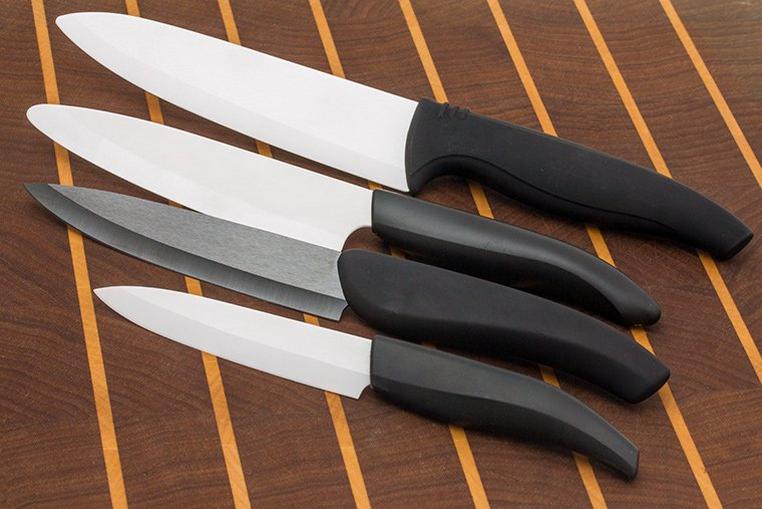

?%24center=center&%24poi=poi&%24product-image%24=&fmt=auto&h=490&poi=%7B%24this.metadata.pointOfInterest.x%7D%2C%7B%24this.metadata.pointOfInterest.y%7D%2C%7B%24this.metadata.pointOfInterest.w%7D%2C%7B%24this.metadata.pointOfInterest.h%7D&scaleFit=%7B%28%24this.metadata.pointOfInterest%29%3F%24poi%3A%24center%7D&sm=c&w=1016)
